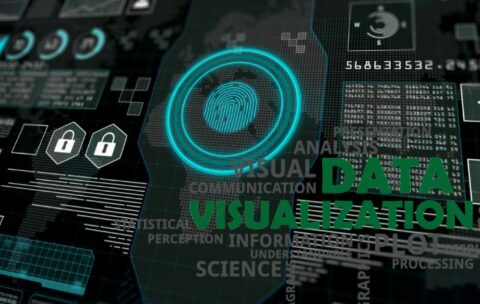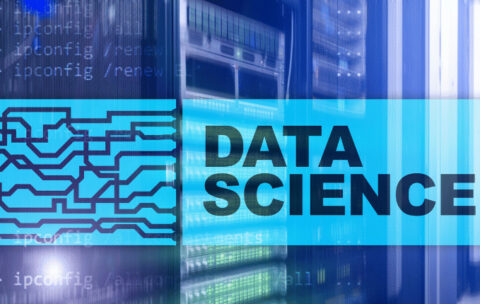Most popular
Advanced Techniques in Natural Language Processing: Text Analytics and Beyond
17 Lessons
Intermediate
What you'll learn
Deep Learning for Text Classification and Sentiment Analysis: Master advanced deep learning methods for classifying and analysing sentiment in text, enabling accurate sentiment identification and classification.
Natural Language Generation: Techniques and Applications: Explore techniques to generate human-like text, including automatic summarisation, content generation, and creative writing.
Advanced Named Entity Recognition and Entity Linking: Gain expertise in identifying and linking named entities, such as people, locations, and organizations, in text for enhanced information retrieval.
Text Summarization: Extractive and Abstractive Approaches: Learn both extractive and abstractive text summarisation methods, condensing large volumes of text into concise summaries.
Mastering Predictive Analytics: Unleashing Data’s Predictive Power
16 Lessons
Intermediate
What you'll learn
Foundational Concepts of Predictive Analytics: Develop a deep understanding of the fundamental concepts, terminologies, and methodologies that underlie predictive analytics and its pivotal role in shaping strategic decisions.
Data Preprocessing and Cleansing Techniques: Master the art of preparing and cleansing raw data to ensure its accuracy, reliability, and readiness for predictive modelling.
Exploratory Data Analysis for Insights: Learn how to extract meaningful insights from data through exploratory analysis, uncovering hidden patterns, correlations, and trends that drive predictive insights.
Feature Selection and Engineering: Understand how to identify, select, and engineer relevant features from data, amplifying the predictive power of your models.
Regression Techniques for Predictive Modelling: Delve into regression algorithms to create models that predict continuous outcomes, enabling you to anticipate future trends and behaviours.
Effective Data Visualization Techniques for Insights
18 Lessons
Beginner
What you'll learn
Principles of Data Visualization: Understand the fundamental principles that guide the creation of effective and meaningful data visualizations.
Choosing the Right Visualizations: Learn how to match different types of data and analytical objectives with appropriate visualization techniques.
Basic Chart Types: Explore common chart types such as bar charts, line charts, and pie charts, and understand when and how to use them.
Advanced Visualization Techniques: Delve into more complex visualizations, including scatter plots, bubble charts, heatmaps, and treemaps, to convey intricate patterns and relationships.
Time Series Visualizations: Gain the skills to visualize time-based data effectively using techniques like time series graphs and calendars.
Mastering NLP: Deep Learning for Natural Language Understanding
16 Lessons
Intermediate
What you'll learn
Introduction to Deep Learning for Natural Language Processing (NLP): Grasp the fundamental concepts of deep learning and its transformative role in enhancing language understanding and generation.
Word Embeddings and Distributed Representations: Understand how to represent words as dense vectors using techniques like Word2Vec and GloVe for improved language analysis.
Recurrent Neural Networks (RNNs) for Sequence Modelling: Dive into the architecture of RNNs, a foundational deep learning model for processing sequential data like text.
Long Short-Term Memory (LSTM) Networks: Gain proficiency in LSTMs, a type of RNN designed to overcome the vanishing gradient problem and effectively model long-range dependencies in text.
Gated Recurrent Units (GRUs) and Their Applications: Explore GRUs, an alternative to LSTMs, and their use cases in sequence modelling and text analysis.
Strategic Predictive Analytics: Making Informed Decisions with Data foresight
17 Lessons
Intermediate
What you'll learn
Foundations of Strategic Predictive Analytics: Develop a solid understanding of the core concepts, methodologies, and significance of predictive analytics in driving informed decisions with a strategic edge.
Data Preprocessing and Cleansing Techniques: Master the art of preparing and cleaning raw data to ensure its accuracy, reliability, and suitability for strategic predictive modelling.
Feature Selection and Engineering for Enhanced Insights: Understand how to identify, select, and engineer relevant features from data, amplifying the predictive power of your models for strategic purposes.
Regression Techniques for Future Outcome Predictions: Explore regression algorithms to create models that predict continuous outcomes, enabling you to anticipate future trends and behaviours that influence strategic planning.
Classification Techniques for Decision-Making: Dive into classification algorithms to build models that predict categorical outcomes, providing the foundation for strategic choices in various scenarios.
Data Visualization and Storytelling for Decision Makers
18 Lessons
Beginner
What you'll learn
Data Visualization Fundamentals: Understand the principles of data visualization and its role in conveying information and insights effectively.
The Psychology of Visual Communication: Learn how human perception is influenced by colours, shapes, and layout, allowing you to design visuals that resonate with decision makers.
Choosing the Right Visualizations: Gain insights into selecting the appropriate visualization techniques for different types of data and analytical objectives.
Crafting Data-Driven Narratives: Develop the ability to weave data into engaging stories that resonate with decision makers, fostering understanding and engagement.
Visual Design Techniques: Learn how to use colours, shapes, typography, and layout to create visually appealing and persuasive data visualizations.
Mastering Time Series Analysis: Foundations and Forecasting Techniques
19 Lessons
Intermediate
What you'll learn
Introduction to Time Series Analysis: Grasp the fundamentals of time series data, its characteristics, and its significance in various fields.
Characteristics of Time Series Data: Understand the distinctive traits of time series data, including trends, seasonality, and noise, and their impact on analysis.
Time Series Components: Trend, Seasonality, and Noise: Delve into the identification and interpretation of trend patterns, seasonal variations, and stochastic noise within time series data.
Stationarity and its Importance in Time Series Analysis: Learn the concept of stationarity and its crucial role in making time series data suitable for analysis.
Autocorrelation and Partial Autocorrelation Functions: Master the use of autocorrelation and partial autocorrelation functions to detect patterns and relationships in sequential data.
Social Media Analytics: Unveiling Insights in the Digital Landscape
17 Lessons
Intermediate
What you'll learn
Foundations of Social Media Analytics: Understand the core concepts and significance of social media analytics in deciphering the digital landscape's complexities and driving informed decisions.
Collecting and Preprocessing Social Media Data: Learn how to effectively gather and preprocess data from various social media platforms, ensuring its quality and relevance for analysis.
Sentiment Analysis and Audience Insights: Master sentiment analysis techniques to gauge audience sentiments, preferences, and trends, enabling you to understand how users perceive your brand or topic.
Measuring Key Performance Indicators (KPIs): Explore essential KPIs such as engagement rates, reach, click-through rates, and conversions, allowing you to quantify the impact of your social media efforts.
Identifying Trends and Influencers: Discover how to identify emerging trends and influential users within social media ecosystems, helping you adapt strategies for maximum impact.
Advanced Data Visualization Strategies for Complex Data
16 Lessons
Intermediate
What you'll learn
Advanced Visualization Techniques: Explore innovative techniques tailored for complex data, including network visualization, high-dimensional data reduction, and interactive visualizations.
Understanding Complex Data Challenges: Gain insights into the unique challenges posed by intricate datasets and strategies to overcome them.
Network Visualization: Learn how to visually represent and uncover relationships, connections, and structures within network data.
Multivariate Data Visualization: Master techniques to effectively display and interpret data with multiple variables, revealing patterns and correlations.
High-Dimensional Data Handling: Understand dimensionality reduction methods to transform high-dimensional data into manageable visual representations.
Advanced Time Series Analysis: Modelling and Predictive Analytics
19 Lessons
Intermediate
What you'll learn
Advanced ARIMA Models: SARIMA and Beyond: Master the techniques of Seasonal ARIMA (SARIMA) models and delve into advanced ARIMA variations to model complex time series data with both trend and seasonality components.
State-Space Models for Complex Time Series: Understand and apply state-space models, enabling you to represent time series data as a combination of unobserved states and observed measurements for more accurate modelling.
Multivariate Time Series Analysis and Vector Autoregression (VAR) Models: Explore the complexities of multivariate time series data, learning to model dynamic relationships among variables using Vector Autoregression (VAR) models.
Nonlinear Time Series Models: Challenges and Solutions: Discover nonlinear time series modelling techniques to capture intricate relationships beyond linear trends, and learn how to tackle challenges associated with such models.
Machine Learning for Time Series: Techniques and Applications: Dive into the world of machine learning applied to time series data, including techniques like Random Forests, Support Vector Machines, and more for improved predictions.
Trending
Mastering NLP: Deep Learning for Natural Language Understanding
16 Lessons
Intermediate
What you'll learn
Introduction to Deep Learning for Natural Language Processing (NLP): Grasp the fundamental concepts of deep learning and its transformative role in enhancing language understanding and generation.
Word Embeddings and Distributed Representations: Understand how to represent words as dense vectors using techniques like Word2Vec and GloVe for improved language analysis.
Recurrent Neural Networks (RNNs) for Sequence Modelling: Dive into the architecture of RNNs, a foundational deep learning model for processing sequential data like text.
Long Short-Term Memory (LSTM) Networks: Gain proficiency in LSTMs, a type of RNN designed to overcome the vanishing gradient problem and effectively model long-range dependencies in text.
Gated Recurrent Units (GRUs) and Their Applications: Explore GRUs, an alternative to LSTMs, and their use cases in sequence modelling and text analysis.
Strategic Data Mining: Unveiling Insights for Informed Decisions
17 Lessons
Intermediate
What you'll learn
Strategic Data Mining Concepts: Grasp the strategic dimensions of data mining beyond technical execution, understanding its pivotal role in shaping business strategies and driving innovation.
Strategic Thinking Frameworks: Develop a strategic mindset by exploring frameworks that enable you to align data mining with business objectives, optimizing resource allocation for maximum impact.
Diverse Data Mining Techniques: Explore a wide range of data mining techniques, from pattern recognition and clustering to predictive analytics and anomaly detection, enabling you to select the most appropriate technique for different scenarios.
Aligning Data Mining with Business Objectives: Learn to identify key business objectives and metrics that can be addressed through data mining, ensuring that insights are directly tied to strategic decision-making.
Effective Data Preparation and Preprocessing: Master the art of data cleaning, transformation, and preprocessing to ensure the quality and reliability of the data before applying data mining techniques.
Mastering Statistical Analysis for Data-driven Decision Making
19 Lessons
Beginner
What you'll learn
Foundations of Statistical Analysis: Establish a strong understanding of statistical concepts, their significance, and their role in data-driven decision-making.
Exploratory Data Analysis and Descriptive Statistics: Learn to summarise and visualise data effectively to uncover initial insights and patterns.
Probability and Probability Distributions: Gain expertise in probability theory and understand various probability distributions for data analysis.
Sampling Techniques and Sampling Distributions: Explore sampling methods and understand how to make inferences about populations based on sample data.
Statistical Inference and Hypothesis Testing: Master the art of making informed decisions through hypothesis testing and confidence intervals.
Strategic Data Science for Business Excellence and Innovation
17 Lessons
Intermediate
What you'll learn
Foundations of Data Science: You will gain a solid understanding of the fundamental concepts, tools, and techniques used in data science, including data collection, cleaning, and analysis. This will serve as the basis for the more strategic applications of data science.
Business Strategy Alignment: The course will emphasize the alignment of data science initiatives with broader business goals and strategies. You will learn how to identify areas where data science can have the most impact and contribute to business growth and competitiveness.
Data-Driven Decision Making: You will explore how data-driven insights can inform and guide decision-making processes across different departments and functions within an organization. This includes understanding how to extract actionable insights from data to make informed choices.
Innovation through Data: The course will showcase examples of how data science can foster innovation within a business context. This might include using data to identify new product opportunities, optimize processes, or create unique customer experiences.
Predictive and Prescriptive Analytics: You will delve into predictive and prescriptive analytics, which involve using historical data to make predictions about future trends and outcomes. This can aid in proactive decision-making and planning.
Mastering Time Series Analysis: Foundations and Forecasting Techniques
19 Lessons
Intermediate
What you'll learn
Introduction to Time Series Analysis: Grasp the fundamentals of time series data, its characteristics, and its significance in various fields.
Characteristics of Time Series Data: Understand the distinctive traits of time series data, including trends, seasonality, and noise, and their impact on analysis.
Time Series Components: Trend, Seasonality, and Noise: Delve into the identification and interpretation of trend patterns, seasonal variations, and stochastic noise within time series data.
Stationarity and its Importance in Time Series Analysis: Learn the concept of stationarity and its crucial role in making time series data suitable for analysis.
Autocorrelation and Partial Autocorrelation Functions: Master the use of autocorrelation and partial autocorrelation functions to detect patterns and relationships in sequential data.
Business Analytics and Data Science: Bridging Insights and Strategy
18 Lessons
Beginner
What you'll learn
Foundations of Business Analytics and Data Science:
Understand the fundamental concepts of business analytics and data science, and their significance in shaping modern business strategies.
Effective Data Collection and Preprocessing:
Learn how to gather, clean, and prepare data for analysis, ensuring its quality and reliability.
Exploratory Data Analysis (EDA) for Informed Decision-Making:
Explore techniques to uncover meaningful patterns, trends, and hidden insights within data, enabling you to make informed decisions.
Statistical Methods for Extracting Business Insights:
Master statistical tools and techniques to derive actionable insights from data, guiding strategic business decisions.
Predictive Analytics and Forecasting in Business:
Acquire the skills to build predictive models and forecast future trends, enabling proactive decision-making and strategy formulation.
Natural Language Processing Fundamentals: From Basics to Applications
18 Lessons
Intermediate
What you'll learn
Introduction to Natural Language Processing (NLP): Understand the significance of NLP, its applications, and its role in transforming unstructured text data.
Language Processing Basics: Tokenization and Text Preprocessing: Learn to break down text into tokens, remove noise, and preprocess text for analysis.
Syntactic Analysis and Part-of-Speech Tagging: Explore the structure of sentences and understand the roles of different words in sentences using part-of-speech tagging.
Sentiment Analysis and Opinion Mining: Acquire the skills to determine sentiment and opinions expressed in text, enabling you to gauge sentiment polarity.
Advanced Techniques in Natural Language Processing: Text Analytics and Beyond
17 Lessons
Intermediate
What you'll learn
Deep Learning for Text Classification and Sentiment Analysis: Master advanced deep learning methods for classifying and analysing sentiment in text, enabling accurate sentiment identification and classification.
Natural Language Generation: Techniques and Applications: Explore techniques to generate human-like text, including automatic summarisation, content generation, and creative writing.
Advanced Named Entity Recognition and Entity Linking: Gain expertise in identifying and linking named entities, such as people, locations, and organizations, in text for enhanced information retrieval.
Text Summarization: Extractive and Abstractive Approaches: Learn both extractive and abstractive text summarisation methods, condensing large volumes of text into concise summaries.
Advanced Techniques in Big Data Processing and Distributed Computing
17 Lessons
Beginner
What you'll learn
Advanced Data Partitioning Strategies: Explore sophisticated techniques to optimally partition and distribute large datasets across distributed systems.
Parallel Processing and Optimisation: Master the art of parallelism, learning how to efficiently execute tasks across multiple nodes for enhanced performance.
Distributed Query Optimisation: Understand advanced methods for optimising queries in distributed databases and systems.
Advanced Algorithms for Data Analysis: Dive into intricate algorithms that facilitate efficient data analysis and manipulation in distributed environments.
Real-time Stream Processing: Develop expertise in processing data streams in real time, extracting insights from dynamic and continuous data sources.
Mastering Data Mining Techniques: From Raw Data to Actionable Knowledge
17 Lessons
Intermediate
What you'll learn
Foundational Understanding of Data Mining: Grasp the fundamental concepts of data mining, comprehend its significance in strategic decision-making, and explore its diverse applications across industries.
Data Preprocessing and Cleaning Techniques: Develop proficiency in preparing raw data for analysis, including cleaning, transforming, and handling missing values, ensuring data quality and reliability.
Exploratory Data Analysis (EDA) and Feature Engineering: Master techniques to explore data patterns, distributions, and relationships. Learn to engineer features that enhance predictive model performance.
Classification Methods: Dive into the realm of classification algorithms, including decision trees, k-nearest neighbours, and support vector machines, to predict categorical outcomes.
Regression Analysis for Predictive Modelling: Understand and apply regression techniques to predict continuous variables, harnessing the power of linear regression, polynomial regression, and more.
Popular Topics
Popular Instructors
All Data Science & Analytics Courses
Course categories
Filter by
Filter by category
Course Sorting
Course level
Course price
All category
We found 36 courses available for you
SQL for Data Analysis: Analyzing and Manipulating Data
17 Lessons
Intermediate
The course “SQL for Data Analysis: Analyzing and Manipulating Data” …
$ 0.00
What you'll learn
Understanding the basics of SQL, including querying databases, filtering data, and sorting results.
Study of SQL functions and operators for data transformation and calculation.
Techniques for using SQL to perform aggregations, such as sum, average, count, and group by.
Exploration of SQL joins to combine data from multiple tables for comprehensive analysis.
Application of SQL for data filtering, subqueries, and advanced data manipulation.
Practice in writing SQL queries to extract insights, summarize data, and solve real-life data analysis problems.
Foundations of Data Science: Principles and Techniques
21 Lessons
Intermediate
The course “Foundations of Data Science: Principles and Techniques” provides …
$ 0.00
What you'll learn
Learn the fundamental concepts and principles of data science, including data manipulation, analysis, and visualization.
Study various data types and formats, such as structured, unstructured, and semi-structured data.
Explore data cleaning, preprocessing, and transformation techniques to ensure data quality.
Understand statistical methods and techniques for analyzing data and extracting insights.
Gain knowledge of data visualization tools and techniques to effectively communicate findings.
Machine Learning and Predictive Modelling for Data Science
22 Lessons
Intermediate
The course “Machine Learning and Predictive Modelling for Data Science” …
$ 0.00
What you'll learn
Explore the principles and techniques of machine learning and its applications in data science.
Study the different types of machine learning algorithms, such as supervised, unsupervised, and semi-supervised learning.
Learn about predictive modelling and how to use machine learning algorithms to make predictions based on data.
Understand data preprocessing and feature engineering techniques to prepare data for machine learning models.
Study model evaluation and performance metrics to assess the accuracy and effectiveness of predictive models.
Gain knowledge of popular machine learning libraries and frameworks, such as scikit-learn or TensorFlow.
.
Advanced Data Analytics: Methods and Applications
17 Lessons
Intermediate
The course “Advanced Data Analytics: Methods and Applications” is designed …
$ 0.00
What you'll learn
Understanding the principles and challenges of big data analytics and data preprocessing techniques.
Study of advanced data mining algorithms, such as decision trees, clustering, and association rule mining.
Techniques for predictive modeling and machine learning for making data-driven decisions.
Exploration of natural language processing (NLP) and sentiment analysis for text data.
Application of data visualization techniques and tools for effective data communication.
Practice in using data analytics tools and programming languages like Python and R for data analysis.























